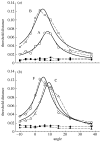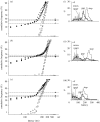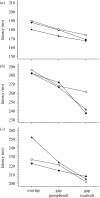The effect of stimuli that isolate S-cones on early saccades and the gap effect
- PMID: 18055389
- PMCID: PMC2593722
- DOI: 10.1098/rspb.2007.1394
The effect of stimuli that isolate S-cones on early saccades and the gap effect
Abstract
Disappearance of the fixation spot before the appearance of a peripheral target typically reduces average saccadic reaction times (the gap effect) and may also produce a separate population of early or express saccades. The superior colliculus (SC) is generally believed to be critically involved in generating both effects. As the direct sensory input to the SC does not encode colour information, to determine whether this input was critical in generating the gap effect or express saccades we used coloured targets which this pathway cannot distinguish. Our observers still made early saccades to colour-defined targets, but these were anticipations in response to the offset of the non-coloured fixation target. We also show that a gap effect still occurs when either the fixation target or the peripheral target is colour defined, suggesting that direct sensory input to the SC is not required and that information about the location of colour-defined targets is abstracted prior to processing within the SC.
Figures








References
-
- Carpenter R.H.S. Oculomotor procrastination. In: Fisher D.F, Monty R.A, Senders J.W, editors. Eye movements: cognition and visual perception. Lawrence Erlbaum Associates; Hillsdale, NJ: 1981. pp. 237–246.
-
- Carpenter R.H.S. SPIC: a PC-based system for rapid measurements of saccadic responses. J. Physiol. (Proc.) 1994;480:4.
-
- Clopper C.J, Pearson E.S. The use of confidence or fiducial limits illustrated in the case of the binomial. Biometrika. 1934;26:404–413. doi:10.1093/biomet/26.4.404 - DOI
-
- de Monasterio F.M. Properties of concentrically organized X and Y ganglion cells of macaque retina. J. Neurophysiol. 1978;41:1394–1417. - PubMed
-
- Dorris M.C, Munoz D.P. A neural correlate for the gap effect on saccadic reaction times in monkey. J. Neurophysiol. 1995;73:2558–2562. - PubMed
Publication types
MeSH terms
Grants and funding
LinkOut - more resources
Full Text Sources
Research Materials
Miscellaneous
